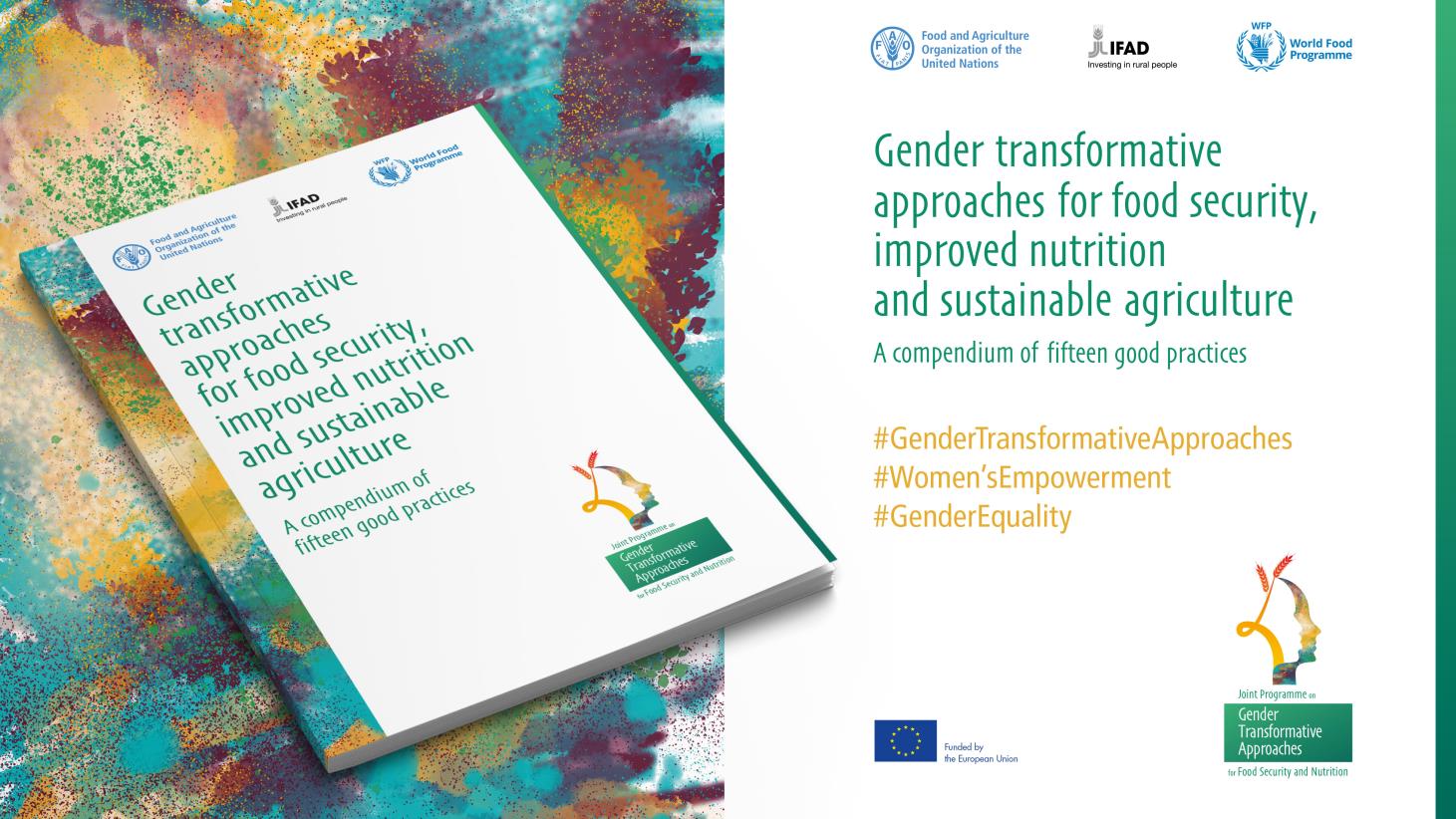A paradigm shift to achieve gender equality and food security
FAO, IFAD and WFP launch a Compendium of Good Practices on Gender Transformative Approaches for Food Security and Nutrition.

On 10th December, the last day of the 16 Days of Activism Against Gender-Based Violence Campaign, one of the highlights of the Virtual Roundtable was the launch of the Compendium of 15 Good Practices on Gender Transformative Approaches, by Máximo Torero Cullen, Chief Economist, FAO, Guoqi Wu, Associate Vice-President, IFAD and Valerie Guarnieri, Assistant Executive Director, WFP. The Compendium was prepared in the framework of the European Union-funded Rome-based Agencies Joint Programme on Gender Transformative Approaches for Food Security and Nutrition. The objective of this Joint Programme is to support FAO, IFAD and WFP in expanding their efforts to deliver on SDG2 by embedding gender transformative approaches (GTAs) in their policies, policy dialogues, programmes, institutional culture and working modalities. The Joint Programme also aims to raise awareness and understanding about the importance and relevance of GTAs for achieving gender equality and attaining food security and improved nutrition objectives.
‘The COVID-19 pandemic has exacerbated the fragility of societies across the globe, presenting an unprecedented challenge to public health, production systems and economic development,’ warned Máximo Torero Cullen, Chief Economist, FAO.
With so many countries in lockdown mode, unemployment on the rise and confinement restrictions, this has created a storm for what is now being called a shadow pandemic – a dramatic increase in gender-based violence – where women and children are its main casualties.
Change patterns and perceptions
‘Specifically, we must provide rural women and girls with equitable access to productive resources and services, and equal engagement in planning and decision-making,’ added Máximo Torero Cullen. ‘This Compendium breaks new ground by exploring the experiences in changing gender-discriminatory stereotypes and mindsets. It showcases a wide range of available gender-transformative approaches and explains what needs to be put in place to scale them up.’
Dismantling discriminatory social norms and antiquated ideas about gender stereotypes can be done in a variety of ways as the Compendium shows. The unifying thread is that we need to have a paradigm shift in how to approach the issue. While approaches and tools may differ depending upon the context, one of the key elements is enlisting the engagement of men as allies not as enemies, to shift age-old perceptions and outdated concepts of masculinity and gender and embrace new behaviour models. Understanding and addressing social norms must come first before any behaviour can change.
The Compendium highlights that gender transformative approaches address the underlying social norms, attitudes and behaviours that keep gender inequality firmly in place. The 15 good practices included in the Compendium address several different areas of gender inequality. They range from unequal workloads between women and men, to the absence of women’s voice in decision-making, to the unequal participation in rural organizations and to women’s unequal access to resources and gender-based violence. The overarching objective of these approaches is to first, shine a light on unfair biases in social or economic settings, formal or informal institutions, in discriminatory policies and laws, second, call for reflection on these deep-rooted social and gender norms and third, challenge the existing power dynamics and bring about a paradigm shift.
The GTAs included in the Compendium facilitate change on many different levels, from the individual and household, to the group and community levels and upwards to institutions to change policies and laws. The examples in the Compendium show that these approaches are flexible: they can be adapted to different contexts, from mentoring poor households on a one-to-one basis to working with groups or communities.
Begin with the end in mind
The Compendium is clear about its goal. Gender equality is not only an end-goal but is also a means to a better future. When communities embrace gender equality, everyone has a better chance in achieving food security faster.
Aimed at policymakers, government officials, donors, NGO and CSO staff, community leaders, facilitators and private individuals, and anyone who wants to bring about gender transformative change in their country, in their interventions, in their communities and households, which will empower rural women, men, girls and boys. This Compendium should also be required reading for anyone working to make food security, improved nutrition and sustainable agriculture (SDG2) a reality.
‘These approaches are key for building kinder and fairer rural communities, where men and women can work together as equal partners,’ concluded Máximo Torero Cullen.
For the full compendium, click here.
For more information, contact:
Hajnalka Petrics, Global Coordinator of the Joint Programme on Gender Transformative Approaches for Food Security, Improved Nutrition and Sustainable Agriculture (JP GTA)
[email protected]
